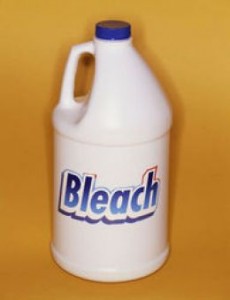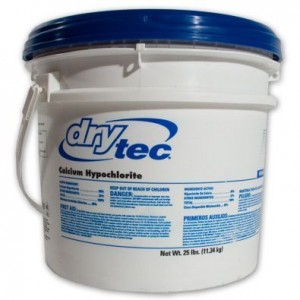Bleach is an amazing tool for sanitizing water in an emergency, so let’s look at some facts.
From the US EPA always boil water as a purification preference when possible “If you don’t have bottled water, you should boil water to make it safe. Boiling water will kill most types of disease-causing organisms that may be present”.
From Willow Haven Outdoor: It is important that your water be clear and void of debris for the above calculations to be effective. Ideally, you are already beginning with clear water. However, have you ever heard of an IDEAL survival situation? Me neither. Consequently, you may need to Pre-Filter your water BEFORE you disinfect it. You can prefilter your water using a huge variety of items – sock, t-shirt, bandanna, dried grass, feminine hygiene product and the list goes on and on. You may even want to prefilter a couple of times. Chlorine will not disinfect sediments. If your water is cloudy, double the chlorine dose and the wait time.
Before we start stocking up on bleach as a tool to treat contaminated water let’s take a quick look at the shelf life. Bleach, like most other liquid cleaning and disinfecting products loses potency overtime. From Clorox.com’s Q&A with Mary Gaiardi “The active ingredient in liquid bleach, sodium hypochlorite, is very sensitive to high heat and freezing, but under normal home storage conditions, it should still perform well for nine to twelve months. So if your storage conditions were either of these, then you will have irreversibly created salt and water.
How much bleach do I need to use? From the Washington State Department of Health:
Treating water with household bleach containing 5.25-8.25 percent chlorine
Volume of Water to be Treated Bleach Solution to Add
1 quart/1 liter 5 drops
1/2 gallon/2 quarts/2 liters 10 drops
1 gallon 1/4 teaspoon
5 gallons 1 teaspoon
10 gallons 2 teaspoons
There are some things to consider that Bleach will not solve; it will not kill some disease-causing organisms commonly found in surface water. Bleach will not remove chemical pollutants.
Also from the Department of Health:
- Treat water by adding liquid household bleach, such as Clorox or Purex.
- Household bleach is typically between 5.25 percent and 8.25 percent chlorine. Read the label.
- Avoid using bleaches that contain perfumes, dyes and other additives. Be sure to read the label.
- Cloudy water should be filtered before adding bleach.
- Place the water in a clean container. Add the amount of bleach according to the table below.
- Mix thoroughly and let stand for at least 60 minutes before drinking.
Because of the relatively short shelf life of bleach, some preppers stock up on pure pool shock. From Instructibles.com: Dry High Test Hypochlorite (HTH) has no shelf life, and its cheap – a one pound bag (that will purify about 10,000 gallons of water) is about $5.00. I spent a little more ($24.00) and bought a five pound jug (which is a LIFETIME) supply because it can be resealed.
I will tell you though that this is not a perfect solution, this stuff is a powerful corrosive and if you don’t store this properly you WILL have problems.
- If it gets wet it can off-gas chlorine.
- It can corrode metals
- If certain petroleum products mix with the HTH it can spontaneously ignite in a way you do NOT want to see.
Only use HTH Pool Shock that does not have any algicides or fungicides. Ingredients should read CALCIUM hypochlorite and inert ingredients. Use a brand with at least 73% Hypochlorite.
Before you begin mixing any chemicals in any way, please follow basic safety precautions. Make sure you do this in a ventilated area. Have plenty of water to dilute any mistakes. Wear eye protection for splashes. Lastly always mix the powder into the water NOT the other way around.
Add and dissolve one heaping teaspoon of high-test granular calcium hypochlorite (HTH) (approximately 1/4 ounce) for each two gallons of water.
From AR-15.com: The mixture will produce a stock chlorine solution of approximately 500 milligrams per liter, since the calcium hypochlorite has available chlorine equal to 70 percent of its weight. To disinfect water, add the chlorine solution in the ratio of one part of chlorine solution to each 100 parts of water to be treated. This is roughly equal to adding 1 pint (16 ounces) of stock chlorine to each 12.5 gallons of water or (approximately ½ liter to 50 liters of water) to be disinfected.
Either way you end up with a drinkable but bad tasting and smelling liquid. To remove any objectionable chlorine odor, aerate the disinfected water by pouring it back and forth from one clean container to another.
The wait time to drink chlorine purified water is 1 hour.
Jon



Leave a Reply